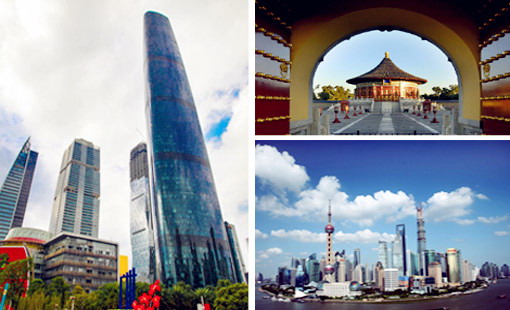Strong navy for regional stability
Updated: 2013-08-15 08:07
By Yang Yi (China Daily)
|
|||||||||||
Aircraft carriers have become the topic of the season. On Aug 6, Japan unveiled Izumo, a helicopter-equipped destroyer which is more like an aircraft carrier, prompting international media outlets, including those in the United States, to comment that Tokyo's ambition to build giant warships could lead to a naval arms race in East Asia. And now India has launched its first home-built aircraft carrier, INS Vikrant, drawing international attention.
The new developments make it all the important for China to strengthen its strategic policies, develop aircraft carriers and modernize its navy according to its national conditions. As a large country with a vast land area and a long coastline, China cannot do without a strong navy.
The key report to the 18th National Congress of the Communist Party of China in November called for increased efforts to build China into a maritime power to safeguard its maritime rights and interests. China will pay special attention to maritime, outer space and cyberspace security, and work out the appropriate use of its military strength in peacetime. But one thing is for sure, the Chinese navy should be developed to a level that matches its rising status in the international community and be capable of safeguarding its national security and increasing development interests.
Given its fast growing power and influence, China's naval buildup has caused widespread concern across the world and invited a lot of criticism, some out of ignorance and some out of narrow geopolitical considerations.
After the commissioning of Liaoning, China's first aircraft carrier, in 2012 and the successful landing test carried out by J-15 fighter jets on it, the international community has realized how determined China is to develop aircraft carriers. Perhaps the world is now trying to figure out how many aircraft carriers China plans to have and how it will use its increasingly powerful navy.
But since China is committed to pursuing a defensive defense policy and military strategy, there is no need to build too many aircraft carriers. Besides, constructing and maintaining an aircraft carrier formation is exceedingly costly, which could compromise the rational allocation of the country's limited military resources and harm the balanced development of the military as a whole.
China has not yet finalized how many aircraft carriers it will have. In fact, the Liaoning, engaged in the important task of training and research, will provide significant decision-making references for the blueprint of China's future aircraft carrier fleet.
But irrespective of the number of aircraft carriers it decides to build, China should follow the principles of "top-level scientific design", "high-end technology", "progressive implementation" and "comprehensive benefit".
Top-level scientific design means China should determine the scale and performance of its aircraft carrier formations based on the needs of its future national interests. So it should take into account not only the need to routinely patrol the seas to safeguard its national security and maritime rights and interests, but also the exigency of beating back invaders from the seas in case a limited war targeting China breaks out.
Aiming for high-end technology means that, instead of trying to keep pace with the US in quantitative terms, China should use the most advanced level technologies to develop its aircraft carriers. This will help China narrow its technological gap with the US and make the carriers competent enough to take on any daunting task.
Progressive implementation means China should proceed with its aircraft carrier-developing mission cautiously and gradually. In accordance with scientific planning, China should work steadily to build an aircraft carrier fleet that is moderate in scale but advanced in terms of technology.
Reaping comprehensive benefits means pushing forward the entire process of naval modernization, including building aircraft carriers, and promoting the coordinated development of the military.
It is important, however, that China is not distracted by the pace of other countries' naval buildup. Moreover, China should remember to timely publicize relevant information on its navy's modernization plan to give the lie to the "China threat" theory, reassure benign powers of its friendly intentions and warn troublemakers against trying any tricks.
A peaceful, rising China will treat all friendly nations well, but will not allow "rogue forces" to run amuck in its region and threaten its national security.
The author is former director of the Institute for Strategic Studies at the People's Liberation Army National Defense University.
(China Daily 08/15/2013 page9)
Today's Top News
Minors going online to buy smokes
Forbidden City bans lighters, matches
Israelis, Palestinians kick off peace talks
Manning 'sorry' for US secrets breach
Snowden case not to affect US-Russia talks
Over 200 dead after Egypt forces crush protesters
Slowing economy takes toll
UN seek private firms' help in curbing HIV/AIDS
Hot Topics
Lunar probe , China growth forecasts, Emission rules get tougher, China seen through 'colored lens', International board,
Editor's Picks

|

|

|

|

|

|





